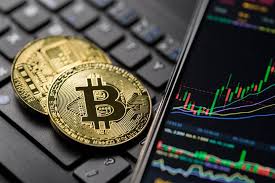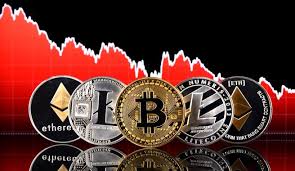
Crypto Paper Trading: A Beginner’s Guide
If you are venturing into the chaotic yet exciting world of cryptocurrency trading, you may have come across the term “paper trading.” This method allows traders to simulate their strategies without risking real money. In this guide, we will delve into the intricacies of Crypto Paper Trading visit website Crypto Paper Trading, discussing techniques, tools, and the benefits of using this approach to sharpen your trading skills.
What is Crypto Paper Trading?
Crypto paper trading is a simulation of real market trading that allows traders to practice strategies in a risk-free environment. Traders can buy and sell cryptocurrencies, track their hypothetical performance, and learn from market dynamics without the financial risks associated with actual trading. This concept has gained popularity among both novice and experienced traders who want to test their strategies before committing real capital.
The Benefits of Paper Trading
- No Financial Risk: The most appealing aspect of paper trading is that it eliminates the risk of losing money. Traders can experiment freely with different strategies without the fear of financial loss.
- Skill Development: Paper trading provides a platform to learn and develop trading skills. Traders can become familiar with different types of analysis and strategies, enhancing their understanding of the market.
- Testing Strategies: Paper trading is ideal for backtesting trading strategies. Traders can evaluate the potential effectiveness of their strategies over time without any real-world consequences.
- Confidence Building: Engaging in paper trading can boost a trader’s confidence, helping them to make more informed decisions when they transition to real trading.
- Market Familiarity: New traders can better understand market dynamics, patterns, and behaviors through simulated trades, preparing them for real-world challenges.
How to Start Paper Trading

To begin with crypto paper trading, follow these steps:
- Choose a Trading Platform: Select a trading platform that offers paper trading accounts. Many popular exchanges and trading platforms provide this feature. Look for a user-friendly interface and comprehensive tools for analysis.
- Create an Account: Sign up for a paper trading account on your chosen platform. This usually involves a simple registration process.
- Allocate a Virtual Budget: Once your account is set up, allocate a virtual budget that simulates real trading conditions. Decide how much “money” you want to trade with.
- Start Trading: Begin executing trades using your chosen strategies. Keep track of your trades to evaluate their performance over time.
- Analyze Performance: Regularly review your paper trading performance to identify strengths and weaknesses. Adjust your strategies as necessary based on your findings.
Common Mistakes to Avoid in Paper Trading
While paper trading is a valuable tool, there are common pitfalls that traders should be aware of:
- Treating It Like Real Trading: One of the biggest mistakes is treating paper trading with the same emotional weight as real trading. It’s important to remember that there’s no financial risk, which can lead to overconfidence and reckless decisions.
- Ignoring Market Conditions: Just because you are using virtual currency doesn’t mean you should ignore the actual market conditions. Take your trades seriously and consider the real-world implications of your moves.
- Inconsistent Analysis: Failure to perform consistent analysis can hinder your learning process. It is critical to analyze your trades and outcomes thoroughly to inform your future strategies.
- Forgetting to Set Goals: Without clear goals, you may lose focus during your paper trading. Set specific objectives regarding what you want to learn or achieve through your exercises.
Tools and Resources for Paper Trading

Several tools can enhance your paper trading experience:
- Cryptocurrency Exchanges: Many exchanges, such as Binance and Coinbase, offer demo accounts that simulate trading environments.
- Trading Simulators: Tools like TradingView offer paper trading features that let you practice trading in various markets.
- Market Analysis Tools: Utilize charting and analysis tools to study market trends and refine strategies based on real-time data.
- Communities and Forums: Engaging with trading communities on platforms like Reddit or Discord can provide valuable insights and collaborative learning opportunities.
Transitioning to Real Trading
After gaining confidence through paper trading, you may feel ready to start trading with real money. However, it’s crucial to approach this transition thoughtfully:
- Start Small: Begin with a small amount of capital. This allows you to acclimate to trading with real money while minimizing risk.
- Apply Lessons Learned: Implement what you have learned from your paper trading experience. Stick to strategies that have proven effective during your simulations.
- Monitor Emotions: Be aware of the emotional aspects of trading with real money. Losses may feel more significant, so it’s important to stay disciplined and not make impulsive decisions.
- Continue Learning: The crypto market is constantly evolving. Keep refining your knowledge and skills by reading and staying updated on market trends.
Conclusion
Crypto paper trading serves as an invaluable tool for traders looking to navigate the complexities of the cryptocurrency market without financial risks. By utilizing this method, you can develop strategies, enhance your trading skills, and build the confidence needed to transition into real trading. Remember to remain analytical, patient, and continuously adaptive to maximize your chances of success in the dynamic world of crypto trading.
